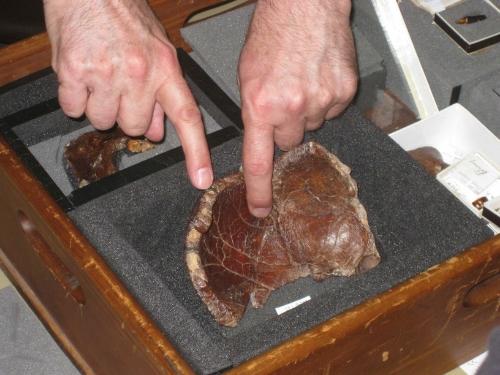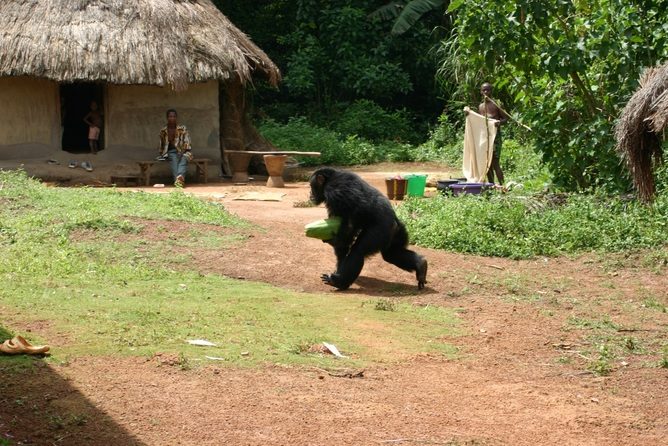Guest Post

By Dr. Jerry Drawhorn
This year, and 60 years since the last extensive analysis of the remains led to the discovery that the Piltdown skull was a fraud, a team of over 15 analysts – including experts in ancient DNA, radiocarbon dating and isotope studies – have been assembled by Chris Stringer of the Natural History Museum in London to re-examine the Piltdown collections using modern analytical methods. The goal is to both to establish the precise methods used to fabricate the remains, and also to determine the original sources for the specimens and clarify the motives of the forger(s). The new studies, scheduled to be published next year, place in context the advances that have been made in analysis and scientific cooperation since the Piltdown finds were unearthed a century ago. No forgery of any significant fossil hominin could today escape disclosure simply because they would face a similar gauntlet of tests prior to peer-reviewed publication. As well, the new studies will reveal the greater detail that has been obtained since the original analysis of the chemical contents of the remains led to the exposure of the fraud almost exactly sixty years ago (Weiner, Oakley, and Le Gros Clark, 1953).
The “Years of Colonial Empire” prior to First World War were quite different from the modern spirit of international cooperation and joint scientific expeditions. The scientific prestige of nations and museums was based on whether they acquired and exhibited new fossil remains. Belgium, France, Germany, and even the Austro-Hungarian Empire had discovered remains of Neanderthals in the soil of their homelands, and in some cases sent covert teams to excavate materials on foreign soil. German collectors had also discovered a form, Homo heidelbergensis they believed distinct and earlier than Neanderthals. And a Dutch scientist, Eugene Dubois, had recently discovered what appeared to be an even more primitive hominin, Pithecanthropus erectus, in the tropical colony of the East Indies. Embarrassingly, Great Britain lacked any ancient human remains. As well, analyses of fossils were performed by one or two individuals responsible for evaluating the geology of the site, archaeological materials and anatomy of the specimens. It was in this context that the now infamous Piltdown remains were first revealed to the public in Burlington House in December 1913.
Dubbed Eoanthropus dawsoni, the skull was supposedly first discovered by workmen digging out gravel along a country road in Sussex in 1908, the cranial bones were identified by a local attorney and landlord’s agent, Charles Dawson. After a mysterious delay of several years he brought the thick fragments to the attention of his friend, Arthur Smith Woodward, the Keeper of Geology at the Natural History Museum in London. Dawson and Woodward had a long relationship of nearly thirty years, having been inducted into the Geological Society of London on the same evening in 1885, and Dawson regularly supplied Woodward, an ambitious palaeontologist in the Natural History Museum, with fossil fish, dinosaur bones, and the teeth of ancient mammals. Woodward and Dawson (1913) eventually collected more specimens, including faunal specimens (hippo, elephant, rhinoceros, horse, and beaver), and “eolithic” artifacts, which suggested that the cranium was older than the Neanderthal remains of Europe and at least as old as Dubois’ Pithecanthropus specimen. In addition, an ape-like mandible was discovered, and the following year (1914) a large canine matching Woodward’s reconstruction was found in previously sieved gravel by French Jesuit cleric and paleontologist Teilhard de Chardin, who had been invited to join in the dig. All these remains were covered in a rich chocolate brown patina that mirrored the iron-stained gravels of the Piltdown pit.
Despite their apparent antiquity, the human specimens were, however, distinct from Pithecanthropus. Thus only one of these potential hominins could be directly ancestral to modern humans. The cranium of Eoanthropus had significantly smaller brow ridges, a higher forehead, and smaller occipital torus than the Javanese skull. These traits suggested modern affinities, but critical to the assessment was the cranial capacity. The parietal bones of the Piltdown skull were incomplete and broken, and oddly lacked any trace of a sagittal suture to indicate a midline. This allowed some latitude for reconstructing the brain size. Woodward had initially suggested that the cranial volume of the skull was only slightly larger than Pithecanthropus, but anatomist Arthur Keith, by brilliantly measuring the surface areas of the bones from more subtle landmarks demonstrated that the brain size of the skull was actually well with the range of modern human populations. However, the associated mandible and the canine indicated a much more apelike face than the dental remains that Dubois had associated with Pithecanthropus. Because the round cranium lacked the brows and tori of Neanderthals and Pithecanthropus and had a modern brain size, Eoanthropus ascended to the status of the singular ancestor to Homo sapiens, with all hitherto hominins competitors pushed to side branches fated with extinction. This interpretation fitted well with Smith Woodward’s orthogenetic view that organisms acquired odd accretions, crests and spines as the phyletic lineage aged.
A phylogeny with so many side-branches was irksome to many human paleontologists, particularly the Ales Hrdlicka, who supported a more lineal sequence to human evolution with less requisite parallelism. Hrdlicka raised questions about the association of the mandible and cranium, pointing out that the absence of an occipital condyle on the mandible prevented a direct anatomical connection. Immediately afterwards, Dawson reported a new locality had been discovered, with both a fragment of thick cranium and a molar tooth from the opposite side of a mandible, but otherwise identical with the original finds. This seemed to foreclose any argument that the mandible and skull could be unassociated.
Because of some noticeable coloration differences of some of the specimens, there had been requests to analytically test the possibility of admixture of remains from different stratigraphic levels, by contrasting the mineral content of the cranium, mandible and the faunal remains. Smith Woodward suggested that the coloration differences were simply because Dawson had applied different levels of preservative on the specimens. Only some inconclusive examinations on the skull by a local chemist in Dawson’s village were performed. This is puzzling because the Fluorine test had been utilized in 1879 by Thomas Wilson to test the antiquity and association of the spurious Calaveras cranium. And Woodward himself had used the Fluorine test to assess the antiquity of bones of the South American Glyptodon associated with human remains (Moreno and Woodward, 1889).
In the period between World War I and II hominin discoveries accumulated, with many broadly confirming the existence throughout the Old World of hominins that broadly resembled Neanderthals or Pithecanthropus (now called H.erectus). In South Africa, curiously small-brained, bipedal forms (Australopithecus) with far more human-like dentitions than Eoanthropus were being recovered. And in what is now Zambia, a skull of H. heidelbergensis was discovered, and Woodward himself described it. He curiously made no mention of his Piltdown discovery at all. Except for Woodward’s book The Earliest Englishmen, (1948) based on his notes at the time, for most reviewers of human evolution at this time, the Piltdown discovery seemed to become an extended footnote, a peculiar specimen without a confirming match in the geological record.
That very same year, Kenneth Oakley (1848), who had revived the application of the Fluorine Dating technique, applied the analysis to the Piltdown remains. The results, showing oddly low levels of Fluorine adsorption in the skull and jaw compared to the faunal remains aroused the attention of Joseph Weiner of Oxford University. He contacted Kenneth Oakley with his concerns of a possible fraud and they assembled a team of specialists from London’s Natural History Museum and Oxford University to careful reexamine the remains. In 1953, in the same Burlington Hall theater were Eoanthropus was originally announced they showed the find was a cleverly assembled fake, combining a Medieval-era human skull with the jaw of an orangutan, and planted with appropriately aged fauna- all artificially stained to resemble the Piltdown gravels. Oakley noted that the chemical composition of many of the specimens appeared not to derive from English collection sites and a radiocarbon dating of the orangutan jaw suggested a sub-fossil specimen that pre-dated collections of materials of zoological collections.
Weiner was more curious than Oakley as to “who-dunnit” and eventually established that Charles Dawson was likely the primary “man-on-the-spot” and perpetrated the fraud. Weiner showed that Dawson was associated with all three sites where collections of stained human remains had been found (a third site with more “modern” crania was never published by Woodward), as well as some stained “eoliths”. Smith Woodward was regarded as an uncritical dupe. But over the last decades a long list of “suspects” (almost all those mentioned in Weiner’s book) have been proposed as possibly involved. Other long-dead suspects identified by researchers include Arthur Smith Woodward, the museum’s keeper of geology, who championed Dawson’s discoveries and gave them vital scientific credibility. Many of the Piltdown remains appear to have potential sources in collections that Smith Woodward curated, studied or directly excavated (Drawhorn, 1994). The finger has also been pointed at de Chardin (Gould 1979), Arthur Keith (Spencer 1990); and even “Sherlock Holmes” author Arthur Conan Doyle (Winslow & Meyer 1983), who lived in Crowborough about 11 km away. Recent suspicion has also fallen on museum zoologist Martin Hinton (Gardiner and Currant, 1996; Gardiner 2003). A trunk with Hinton’s monogram was found in 1971, a decade after his death, which contained animal bones and human teeth claimed to be in stained the same way as the Piltdown fossils.
The new barrage of studies will hopefully clarify whether the fraud involved a knowledgeable break-up of the skull and jaw to lead anatomists astray. As well they may reveal the precise sequence the stains were applied, and distinguish between the endogenous mineral composition of the faunal materials and the applied chemicals. Are the applied stains actually identical to the methods used by Hinton on his faunal and human specimens? And do the trace isotopes of the Piltdown specimens allow them to be associated with known fossil collections and expose the manner in which the hoaxer obtained them? All who have been fascinated by what has been called “the greatest scientific fraud in history” anxiously await a final resolution of the case.
Drawhorn, G. M. (1994) Piltdown: Evidence of Smith-Woodward’s Complicity. American Association of Physical Anthropologists on April 1, 1994 (The abstract of this paper appears in the February 1994 issue of the AJPA) http://www.talkorigins.org/faqs/piltdown/drawhorn.html
Gardiner BG The Piltdown forgery: a re-statement of the case against Hinton. Zoological Journal of the Linnean Society, 2003, 139, 315–335. With 12 figures
Gardiner BG, Currant A. 1996. The Piltdown Hoax who done it. Linnean Society of London, Burlington House.
Gould SJ. 1980. The Piltdown conspiracy. Natural History (New York) 89: 8–28.
Moreno, F.P. and A.S. Woodward. 1989. On a portion of mammalian skin, named ‘Neomylodon listai’, from a cavern near Consuelo Cove, Last Hope Inlet, Patagonia. Proceedings of the Zoological Society of London 1:144-156.
Oakley KP. 1948. Fluorine and the relative dating of bones. Advancement of Science 4 (16): 336–337.
Spencer, F. 1990. Piltdown: A Scientific Forgery “Beyond A Reasonable Doubt?” pp. 188-208 London: Natural History Museum Publications.
Weiner, J. S., Oakley, K. P, and Le Gros Clark, W. E., (1953) The Solution of the Piltdown Problem. Bull. Brit. Mus. (Nat. Hist), Geol.,2, No. 3, 139-46
Winslow J, Meyer A. 1983. The perpetrator of Piltdown. Science 83 (4): 32–43.
Dawson, C. and A.S. Woodward. 1913. On the discovery of a Paleolithic human skull and mandible in a flint-bearing gravel overlying the Wealden (Hastings Beds) at Piltdown, Fletching (Sussex). Quarterly Journal of the Geological Society of London 69:117-151.
Dr. Jerry Drawhorn is a Biological Anthropologist at Sacramento State University. A graduate of UC Berkeley and UC Davis, he has studied the evolution of fossil orangutans in Indonesia and Malaysia. He is also involved in research on the interactions between Charles Darwin and Alfred Russel Wallace and their influence on others involved in Victorian-era zoological research in Southeast Asia.


